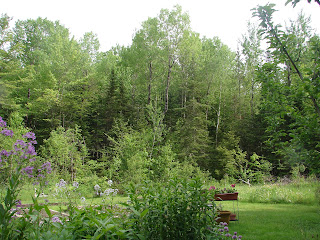With
back-to-back snowstorms behind us, the Town of Waldo
My
morning was spent shoveling snow, probably my least-favorite activity in the
world. The acquisition of one of those snow scoops, the kind that you push
instead of lift, has made things at least somewhat easier. But when snow gets
just so deep, it’s difficult to dump the snow from the scoop. The best I can do
is to partially upend the thing and push on it. Then, when pulling back on the
handle, the snow stays in place, as long as it was well-packed. That just goes
to show that nothing comes easy.
The
accumulated depth of snow now has caused me to re-think my plans for January 1,
the first day that we may go ice fishing and keep trout, togue (lake trout) and
salmon under general law rules. Wallowing through knee-deep snow to get out on
a lake isn’t fun. Besides, I’m not totally sanguine about the thickness of ice
on local lakes and ponds. Safe ice had only begun to form and now the snow will
act as an insulator, making it difficult to add ice.
So
after my morning’s labors, I’m just happy to come back inside and plan
dinner…what I refer to as dinner, anyway. It’s an old-time country term for
what most everyone now calls lunch. But lunch, in my vernacular, can happen
anytime, as in, “I think I’ll stop and have a little lunch.”
And
of course dinner to everyone else is supper to me. It’s stuff such as this that
I ponder now, what with my reinforced confinement in the house. The plow man
hasn’t come yet and with all the driveways he has to plow and the depth of the
snow, it’s possible I may be stuck inside for several days. And goodness knows
what deep thoughts (as in lunch, dinner and supper distinctions) I’ll ponder in
the meantime?
But
not to worry. I have thawed out a package of squid from last summer. These, I
vacuum-sealed in special bags and they are as good as fresh. And later, the
pack of lamb chops I took from the freezer last night will make for an elegant
supper (dinner, if you will).
Tonight
is supposed to come off clear, albeit cold…the Weather Channel calls for
temperatures of 0 Fahrenheit. But as long as it’s not too windy, cold won’t
present a problem. I hope to set up a telescope and do some stargazing. Skies
are often quite transparent after a storm front departs. And transparent skies,
meaning a lack of upper-lever turbulence, mean excellent viewing.
And
if the full moon poses a problem, then I might dispense with the scope and do
some limited stargazing with my image-stabilized binoculars. These keep shaking
to a minimum, the end result is something like a great leap in magnification.
With these 10 X 30 Canon binoculars, I can plainly see all four of Jupiter’s
Galilean moons. And of course, star clusters and other celestial goodies come
to life in the Canons.
So
being stuck at home because of snow is really no big deal. It used to happen to
people all the time and they easily took it in stride. It’s only today, with
the demand for unhampered access to stores and whatnot, that being snowbound
makes folks uneasy. As for me, it doesn’t make much difference. I’ll use the
time to write a few columns and work on some new jigs and reels. Besides, I
have three bottles of Sam Adams Boston Lager in my refrigerator. It could be
worse.
Happy
New Year.













